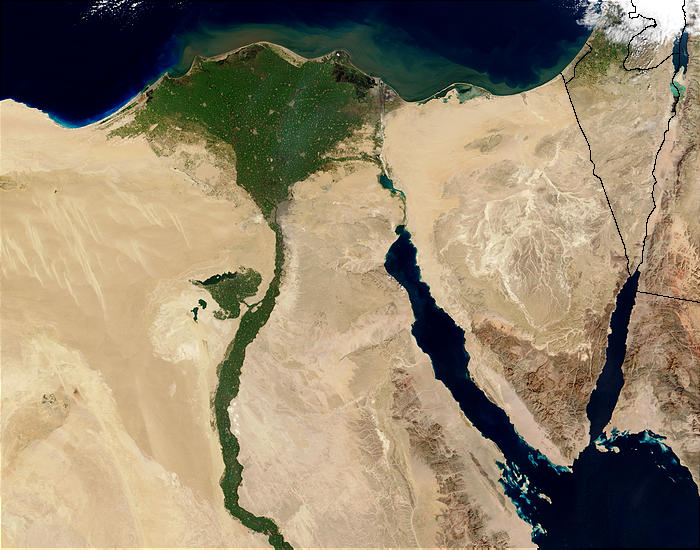The Aswan High Dam on the Nile River began operation of July 21, 1970. The dam is one of the largest in the world—and perhaps the most controversial dam in the world. The Arabic name for the dam is Al-Sadd all-Ali.

The Nile River is an essential resource to the peoples of the Nile River watershed, mostly in what is now Egypt. Most Egyptians, 95%, live within 12 miles of the river and its diverse delta system. Managing the massive flows of the river has always been an active part of the civilization of the region.
Modern attempts to control the flow of the river began with the building of the Aswan Low Dam in 1902. The dam, built by the British, was designed to control flooding and provide a more even flow of irrigation water for cotton farms in the delta. Its height was raised twice to make it more effective, but it was still too small to produce the desired results

Consequently, plans for a new dam, a few miles upstream, began in the 1950s. During the Cold War, both the U.S. and England on one side and the Soviet Union on the other side competed to gain an alliance with Egypt by agreeing to pay for the dam. However, both the U.S. and England backed out of the deal. The Soviet Union stayed and became Egypt’s partner to help plan, build and finance the dam.
Construction took from 1960-1968, but the official date of opening was July 21, 1970. The dam is huge—111 meters high, 3830 meters long, and 980 meters wide at the base. It is an embankment dam, constructed of rock, clay and dirt. The amount used to build the dam is equal to the equivalent of 17 Great Pyramids of Giza. The dam created Lake Nassar, one of the ten largest reservoirs in the world.
The Aswan High Dam has produced significant benefits for the people of Egypt. By providing reliable irrigation water, it has doubled the annual food production of the country. It supplies 50% of all the electricity of the nation. River transportation has been improved, and the reduction in flooding has saved countless lives and resources.

The controversy about the dam, however, relates to many negative impacts. About 90,000 Egyptians were relocated, and with insufficient assistance, most became impoverished. Annual flooding once spread highly fertile silt across the adjacent agricultural lands to the river; now, to replace those nutrients farmers must apply manufactured fertilizer. The raising of the water table and heavy irrigation have combined to increase salt deposits in surface waters, reducing the overall quality of much cultivated land. The permanent wetlands and shallow lake waters created by the dam have allowed the devastating disease, schistosomiasis, to spread to epidemic proportions. Fisheries in the eastern Mediterranean Sea have declined due to increased salinity and reduced fertility of the water.
The Aswan High Dam illustrates the dilemmas faced when humans modify the forces of nature. Today big dams like this one are generally looked down on by environmentalists, but the benefits—flood control, energy production, reliable water supply—are enormous. Maybe Hamlet should have asked this: To dam or not to dam—that is the question!”
References:
Encyclopedia Brittanica. Aswan High Dam. Available at: https://www.britannica.com/topic/Aswan-High-Dam. Accessed July 21, 2017.
Furman, T. and L. Guertin. Problems with the Aswan Dam. Department of Geosciences, Penn State. Available at: https://courseware.e-education.psu.edu/courses/earth105new/content/lesson06/04.html. Accessed July 21, 2017.
PBS. Aswan High Dam. Wonders of the World databank, Public Broadcasting System. Available at: http://www.pbs.org/wgbh/buildingbig/wonder/structure/aswan_high.htmlm Accessed July 21, 2017.
